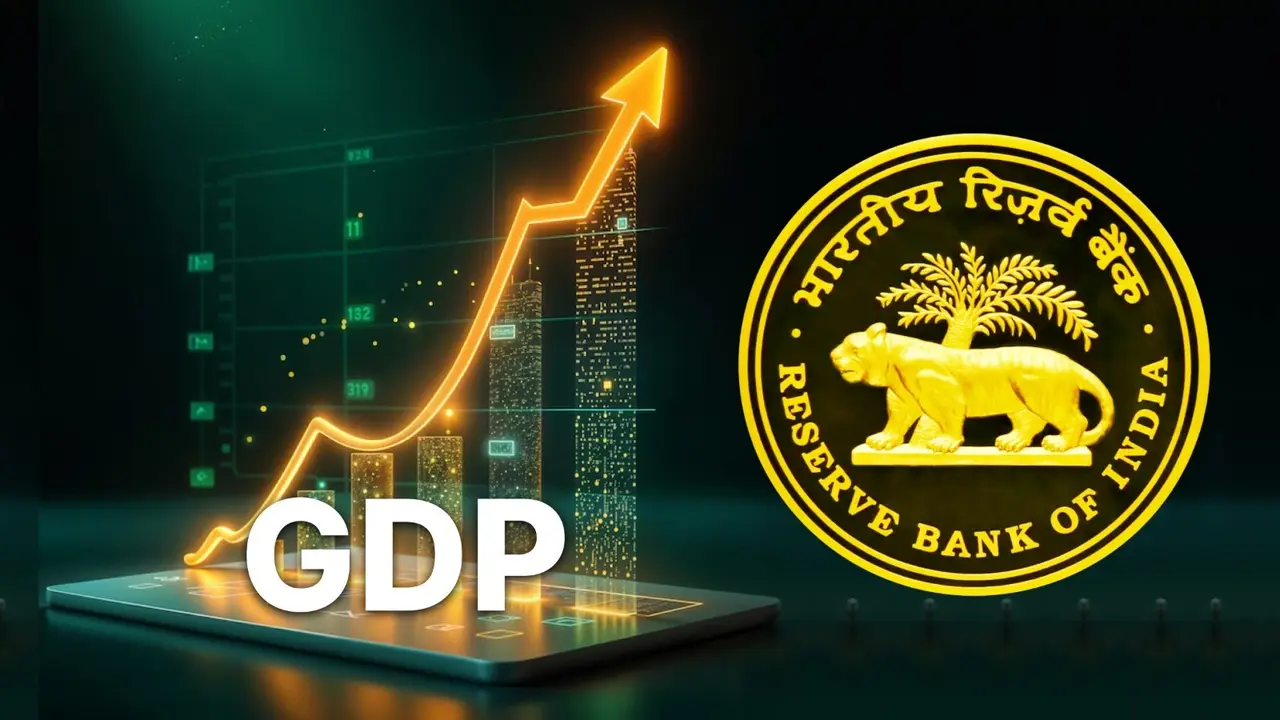Updated 6 June 2025 at 17:48 IST
How Is RBI’s 'Aggressive' Rate Cut Driving Strong GDP Growth and Lower Inflation? Experts Breaks It Down
The Reserve Bank of India (RBI) Monetary Policy Committee (MPC) has maintained its growth outlook for the Gross Domestic Product (GDP) of India to 6.5% for the fiscal year 2025-26, the Governor Sanjay Malhotra announced on Friday, June 6.
- Republic Business
- 4 min read

The Reserve Bank of India (RBI) Monetary Policy Committee (MPC) has maintained its growth outlook for the Gross Domestic Product (GDP) of India to 6.5% for the fiscal year 2025-26, the Governor Sanjay Malhotra announced on Friday, June 6.
The central bank has also lowered its inflation forecast for the fiscal year 2025-26 to 3.7%, down from 4% earlier, on the back of a continuous fall in consumer prices.
The MPC has also decided to cut the key lending rate by 50 basis points, which marks the third consecutive rate cut following two previous ones in February and April. The repo rate is currently at 5.5%, down from 6% earlier.
GDP Growth For All Quarters Of FY26
While the growth rate for FY26 remains unchanged, for the first quarter of FY26, the GDP growth rate is estimated to be at 6.5%, followed by 6.7% for the second quarter, 6.6% for the third quarter and 6.3% for the fourth quarter of this fiscal.
Advertisement
What Did The Expert Say?
Kishore Subramanian, Financial Expert
Financial expert Kishore Subramanian decoded how a reduced repo rate, steady GDP growth forecast and lower inflation is going to prove to be beneficial for the economy.
According to Subramanian, the "core driver of economy and demand in real estate and in economy is financing."
Advertisement
"This rate cut will sprinkle the market confidence and infuse huge liquidity," he said, adding that this is an "extremely strong signal of policy support for real estate sector" and that it will spur demand in growth.
He further added that this front-loading rate cut will quicken the GDP upward growth, which means that the scope for further rate cut is limited.
The softening of inflation added with that rate cut is amazing news for a growing economy, Subramanian added.
The Cash Reserve Ratio (CRR) cut will release a liquidity of 2.5 lakh crore, which has been cut down to 3% by 100 basis points.
According to him, the markets will likely react extremely positively.
He further added, "housing loan companies should pass on the benefit of the rate cut to the end consumer quickly and if that happens it will increase the disposable income of the common man and lead to more purchasing power and higher economic activity."
Vivek Iyer, Financial Services Risk Leader
Vivek Iyer, Partner and Financial Services Risk Leader at Grand Thornton Bharat said, "In our view, given the uncertain external environment and evolving geopolitical scenario, it was necessary to prioritise growth. The fact that the inflation projections for quarter 1 of this financial year is the lowest of all the quarters is reflective of this thought process."
He further added that the rate cut also brings significant relief to the existing buyers in terms of EMI reduction, which will increase the amount available for discretionary spending in the hands of households driving growth.
"This will also provide a significant filip to mortgage demand by new aspirant home owners driving growth as housing has a tendency to have a broader impact on economic growth," he added.
Sandeep Vempati, Economist And Columnist
Economist, columnist and a member of the Bharatiya Janata Party, Sandeep Vempati said, "In the times of global uncertainty and trade policy uncertainty, this augurs well for growth of Indian economy by way of increased credit offtake both from corporates and households in the form of increased consumption and investment. This comes in the backdrop of credit growth moderating in FY25 and strong corporate and household balance sheets."
According to Vempati, existing borrowers, both households and corporates, who are linked to external benchmark are likely to see reduced interest outgo.
Rahul Ahluwalia, Founder-Director Of Foundation For Economic Development
According to Rahul Ahluwalia, since the interest rates have been lowered, this is "obviously Good for borrowers," but it will only be good for the economy if borrowers are able to make productive use of the additional capital.
Published By : Sagarika Chakraborty
Published On: 6 June 2025 at 12:35 IST
